Hunting the Crown Jewels of the U.K.
September 24, 2020



 Hunting,SCA Articles
Hunting,SCA Articles
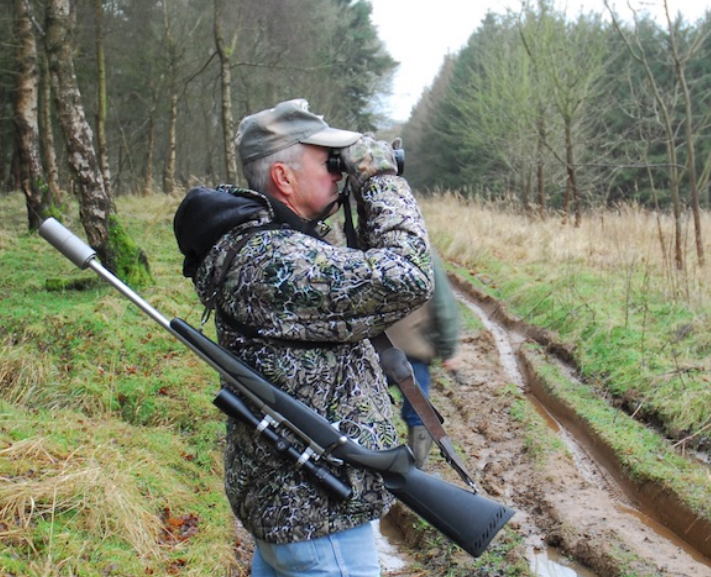
I long dreamt of hunting the Chinese water deer. It materialized when I met Kevin Downer, a professional hunter from Sussex, England, at the SCI convention.
On a cloudy, cold, dank, boot-wearing morning, I began my hunt for the unique saber-tusked Chinese water deer. I was paralleling a hedgerow separating forest from cropland planted in rape – grown for its valuable oil-bearing seed, but extremely attractive to these animals. The terrain reminded me of pasture land I hunted groundhogs on when I was a youngster. But once I peered over the hedge and saw my first Chinese water deer, I was reminded that I was a long way from home, pursuing one of the most unique members of the cervidae family.
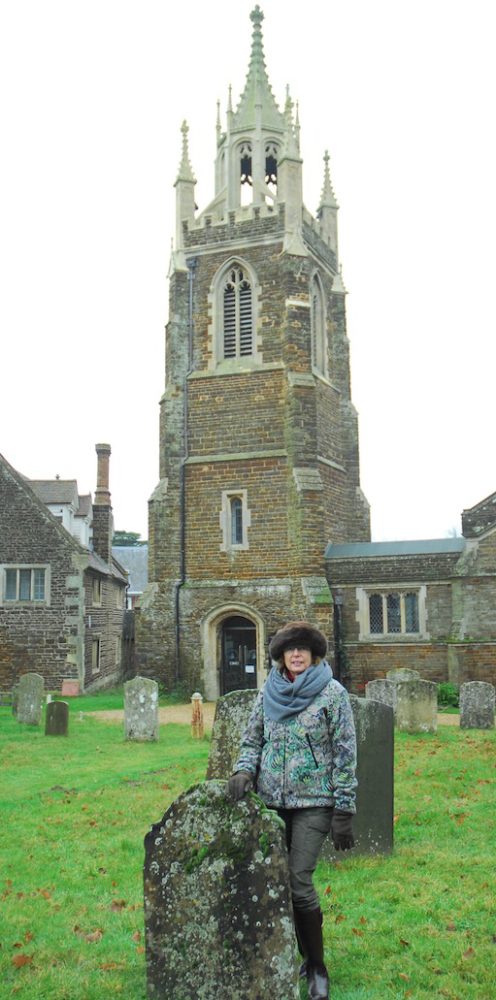
Two subspecies, both native to China, exist. The one I pursued was hydropotes inermis, which arrived in Great Britain in 1870, destined for the London Zoo. Surplus animals were released onto the Woburn Abbey Bedfordshire Wildlife Park in 1896 where some eventually escaped and thrived on the verdant nutrient-rich farmland.
These 20-to-30-pound grayish-to-tan-coated deer are equipped with a unique set of downward projecting, saber-like tusks, used by rutting males to deliver slashing cuts to competitors during the fall and early winter breeding season.
I long dreamt of hunting these fascinating evolutionary stalled-out animals, and it materialized when I met Kevin Downer, a professional hunter from Sussex, England, at the Safari Club International convention. There I booked a hunt with the amicable and loquacious gentleman.
Following a nine-hour flight and a scenic two-hour drive northwest of Heathrow Airport, my wife Jan and I arrived in Woburn. Our temporary residence was the historic Woburn Inn, which has accommodated guests longer than the U.S. has been in existence.
The following morning, our first day of hunting, we paralleled holly and briar-lined fence rows to see undisturbed water deer feeding in the rape fields. The melodious calls of the Great Tit Bird and the pastel, orange-breasted robin were periodically interrupted by the sporadic roar of cannon guns placed around the field’s edge to discourage wood pigeons from feeding on the valuable seed.
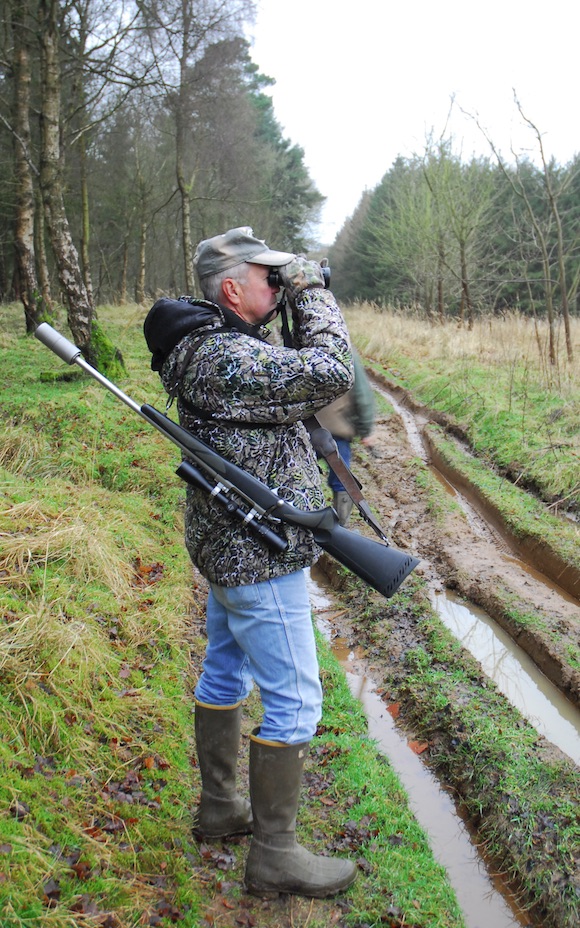
The live fence rows provided great cover and an excellent view of the small deer in an undisturbed state. And although I found it challenging to see tusks, the males were not difficult to discern as they were larger than the females with obvious scars originating from previous battles. We observed several fights and could hear the clacking sound of those tusks by males attempting to attract females.
It was not long before we came upon three males hazing a single female, and it was obvious which one was in charge, as the larger-bodied, dominant male remained at the female’s side, only periodically leaving its potential mate to drive away satellite males. Through my binoculars, its long, yellowish-white canines extended below the lower jaw, and based on Kevin’s body language, I knew we had located a desirable candidate.
Slinking down to break our outline, we stealthily maneuvered towards the group. Upon reaching a thinned-out portion of the hedge, Kevin set up the shooting sticks. Abruptly my heart rate escalated to a feverish pitch as I balanced my rifle on the elevated platform. One shot, and the animal dropped to the damp ground. I was not sure who was more excited, Kevin or I, because the animal was a phenomenal tusker, easily ranking in the top ten. I was simply in awe, realizing another one of my life-long dreams.
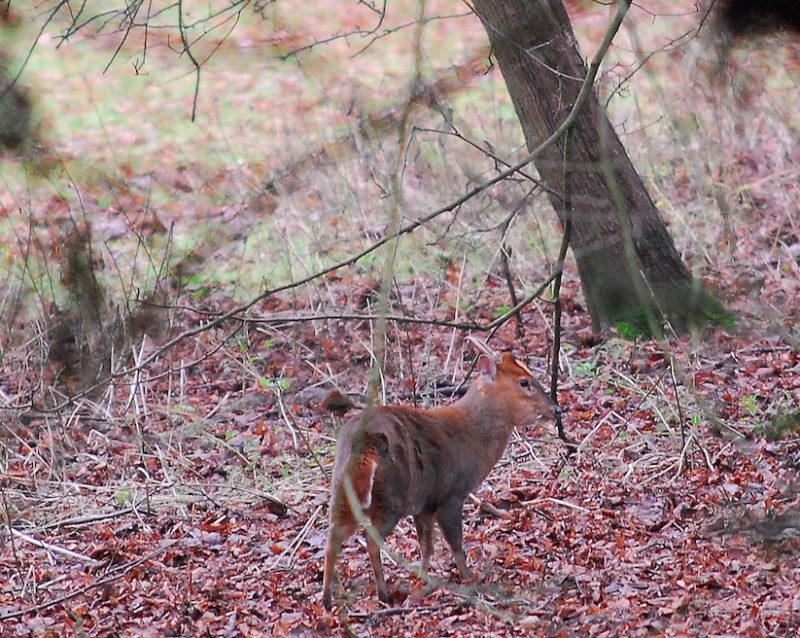
Back on the Bedford estate our hunt continued for another cervid equipped with both antlers and canines—the muntjac—considered the oldest member of the deer family, appearing 15 to 35 million years ago.
Often referred to as barking or Mastreani deer, muntjacs are a small 20 to 35-pound deer in the genus Muntiacus. Reeve’s Muntjac were introduced to England around the turn of the 19th century with ferals descending from escapees from the Woburn Safari Park around 1925. Extremely adaptable, muntjacs have expanded rapidly, and some predict they will become the most abundant deer species in England.
Unlike the open fields preferred by Chinese water deer, muntjac prefer the deep forest. We now sloshed our way over muddy logging roads in mixed islands of forest.
As water droplets originating from an early afternoon shower dangled precariously from the tip of my cap, I scanned openings in the briar-littered understory. Skirting a thick stand of Scotch pine, then entering a hardwood forest composed of beech, oak, and ash trees, a pair of woodcock exploded skyward.
With little sunlight reaching the ground layer, the understory was limited, thus we enjoyed a clear view of the forest floor and its occupants, but other than seeing a herd of fallow deer and a few ringneck pheasant running out ahead of us, we failed to see a single muntjac. Entering an area where the timber had been selectively removed, visibility decreased as a dense mat of grass and fern interspersed with thick islands of briars made up the herbivory. Standing within a waist-high briar patch, Kevin attempted to call in a particularly large buck he had previously observed.
With my rifle resting on the sticks, Kevin emitted a fawn bleat-like call, but nothing appeared interested. We attempted to call from two other positions but failed to attract the attention of the old muntjac.
Shortly after entering a young timber stand inundated by briars on the ground floor, we spooked several female muntjacs. I was enjoying the view of the shellac-rusty brown-colored animals when Kevin suddenly pointed out the male we were after as it bounded away. At 150 yards or so, it paused before entering the protection of the pines, but I wasn’t fast enough, and my evening hunt was over as darkness shrouded the forest.
The following morning we hunted a different area and saw a substantial number of muntjac, including several males, but nothing Kevin considered to be of trophy quality.
Following a delightful English breakfast in a pub at Woburn Sands, we caught up with several of the gamekeepers to discuss our best options for the evening hunt. After hearing about what the gentlemen had been seeing, I anticipated an exciting afternoon.
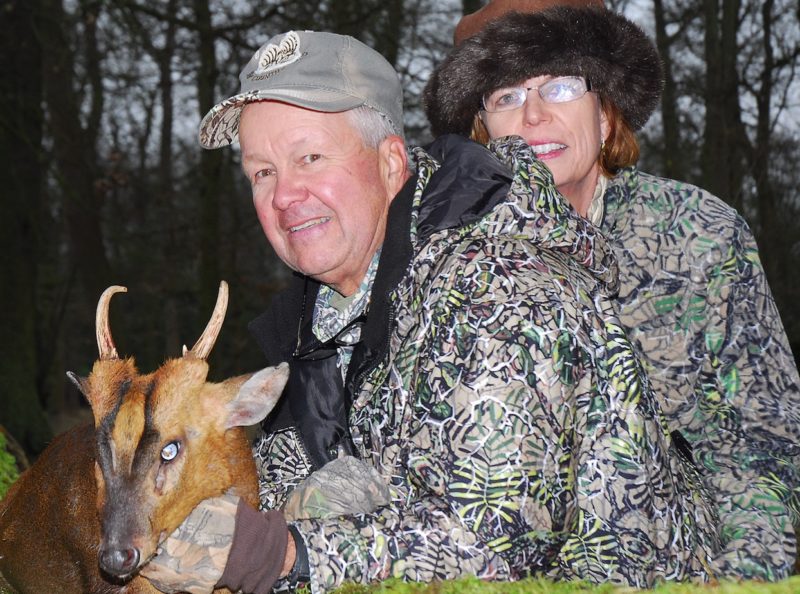
Our first stalk was in a mature forest with clumps of laurel scattered about the forest floor. Muntjacs were abundant as well as some incredibly large fallow deer. Positioned near a huge oak to break our outline, we watched several muntjac feed not 50 yards from us. One of the males appeared to have a substantial headset, but apparently didn’t satisfy Kevin’s discretionary taste, so after watching the group for an enjoyable 20 minutes, we moved on.
Working our way back to our vehicle, Kevin spotted an exceptional male feeding at the edge of the forest. Utilizing massive hardwood trees to shield our movements, we worked our way to within 125 yards of the animal to verify that it supported desirable headgear. Once again, my .243 was back on the sticks, and moments later I had fulfilled my dream of taking the oldest, and possibly most unique member of the deer family—a muntjac—verifying the fact that it is not size of animal, but quality of experience and who it is shared with that counts most.
